Rosa hybrida Petal Extract Exhibits Antitumor Effects by Abrogating Tumor Progression and Angiogenesis in Bladder Cancer Both In Vivo and In Vitro
- PMID: 35912937
- PMCID: PMC9421223
- DOI: 10.1177/15347354221114337
Rosa hybrida Petal Extract Exhibits Antitumor Effects by Abrogating Tumor Progression and Angiogenesis in Bladder Cancer Both In Vivo and In Vitro
Abstract
The edible Rosa hybrida (RH) petal is utilized in functional foods and cosmetics. Although the biological function of RH petal extract is known, mechanism of action studies involving tumor-associated angiogenesis have not yet been reported. Herein, we investigated the regulatory effect of the ethanol extract of RH petal (EERH) on tumor growth and tumor angiogenesis against bladder cancer. EERH treatment inhibited the bladder carcinoma T24 cell and 5637 cell proliferation because of G1-phase cell cycle arrest by inducing p21WAF1 expression and reducing cyclins/CDKs level. EERH regulated signaling pathways differently in both cells. EERH-stimulated suppression of T24 and 5637 cell migration and invasion was associated with the decline in transcription factor-mediated MMP-9 expression. EERH oral administration to xenograft mice reduced tumor growth. Furthermore, no obvious toxicity was observed in acute toxicity test. Decreased CD31 levels in EERH-treated tumor tissues led to examine the angiogenic response. EERH alleviated VEGF-stimulated tube formation and proliferation by downregulating the VEGFR2/eNOS/AKT/ERK1/2 cascade in HUVECs. EERH impeded migration and invasion of VEGF-induced HUVECs, which is attributed to the repressed MMP-2 expression. Suppression of neo-microvessel sprouting, induced by VEGF, was verified by treatment with EERH using the ex vivo aortic ring assay. Finally, kaempferol was identified as the main active compound of EERH. The present study demonstrated that EERH may aid the development of antitumor agents against bladder cancer.
Keywords: bladder cancer; bladder cancer cells; ethanol extract of Rosa hybrida; kaempferol; tumor angiogenesis; xenograft mice.
Conflict of interest statement
Figures
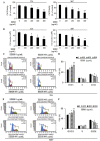
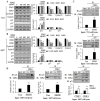
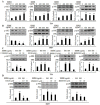
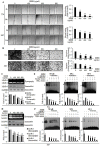

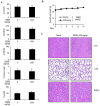




Similar articles
-
The edible ethanol extract of Rosa hybrida suppresses colon cancer progression by inhibiting the proliferation-cell signaling-metastasis axis.Nutr Res Pract. 2025 Feb;19(1):14-29. doi: 10.4162/nrp.2025.19.1.14. Epub 2024 Oct 2. Nutr Res Pract. 2025. PMID: 39959743 Free PMC article.
-
In vitro and in vivo anti-tumor efficacy of krill oil against bladder cancer: Involvement of tumor-associated angiogenic vasculature.Food Res Int. 2022 Jun;156:111144. doi: 10.1016/j.foodres.2022.111144. Epub 2022 Mar 16. Food Res Int. 2022. PMID: 35651016
-
Carnosine exerts antitumor activity against bladder cancers in vitro and in vivo via suppression of angiogenesis.J Nutr Biochem. 2019 Dec;74:108230. doi: 10.1016/j.jnutbio.2019.108230. Epub 2019 Sep 1. J Nutr Biochem. 2019. PMID: 31683101
-
Harmine suppresses bladder tumor growth by suppressing vascular endothelial growth factor receptor 2-mediated angiogenesis.Biosci Rep. 2019 May 2;39(5):BSR20190155. doi: 10.1042/BSR20190155. Print 2019 May 31. Biosci Rep. 2019. PMID: 30910851 Free PMC article.
-
Cultivated Orostachys japonicus extract inhibits VEGF-induced angiogenesis via regulation of VEGFR2 signaling pathway in vitro and in vivo.J Ethnopharmacol. 2020 Jun 28;256:112664. doi: 10.1016/j.jep.2020.112664. Epub 2020 Feb 8. J Ethnopharmacol. 2020. PMID: 32045685
Cited by
-
The edible ethanol extract of Rosa hybrida suppresses colon cancer progression by inhibiting the proliferation-cell signaling-metastasis axis.Nutr Res Pract. 2025 Feb;19(1):14-29. doi: 10.4162/nrp.2025.19.1.14. Epub 2024 Oct 2. Nutr Res Pract. 2025. PMID: 39959743 Free PMC article.
-
Network Pharmacology and Molecular Docking Analysis on Molecular Targets and Mechanisms of Bushen Hugu Decoction in the Treatment of Malignant Tumor Bone Metastases.Biomed Res Int. 2022 Nov 16;2022:2055900. doi: 10.1155/2022/2055900. eCollection 2022. Biomed Res Int. 2022. PMID: 36440359 Free PMC article.
References
-
- Bray F, Ferlay J, Soerjomataram I, Siegel RL, Torre LA, Jemal A. Global cancer statistics 2018: GLOBOCAN estimates of incidence and mortality worldwide for 36 cancers in 185 countries. CA Cancer J Clin. 2018;68:394-424. - PubMed
-
- Kamat AM, Hahn NM, Efstathiou JA, et al.. Bladder cancer. Lancet. 2016;388:2796-2810. - PubMed
-
- Smith AB, Deal AM, Woods ME, et al.. Muscle-invasive bladder cancer: evaluating treatment and survival in the National Cancer Data Base. BJU Int. 2014;114:719-726. - PubMed
-
- Schneider AK, Chevalier MF, Derré L. The multifaceted immune regulation of bladder cancer. Nat Rev Urol. 2019;16:613-630. - PubMed
-
- Black PC, Dinney CP. Bladder cancer angiogenesis and metastasis–translation from murine model to clinical trial. Cancer Metastasis Rev. 2007;26:623-634. - PubMed
Publication types
MeSH terms
Substances
LinkOut - more resources
Full Text Sources
Medical
Miscellaneous

